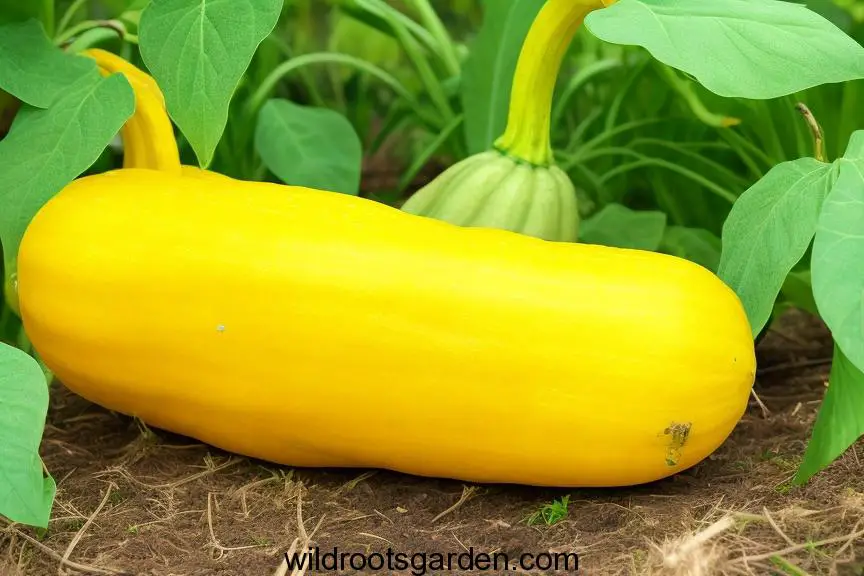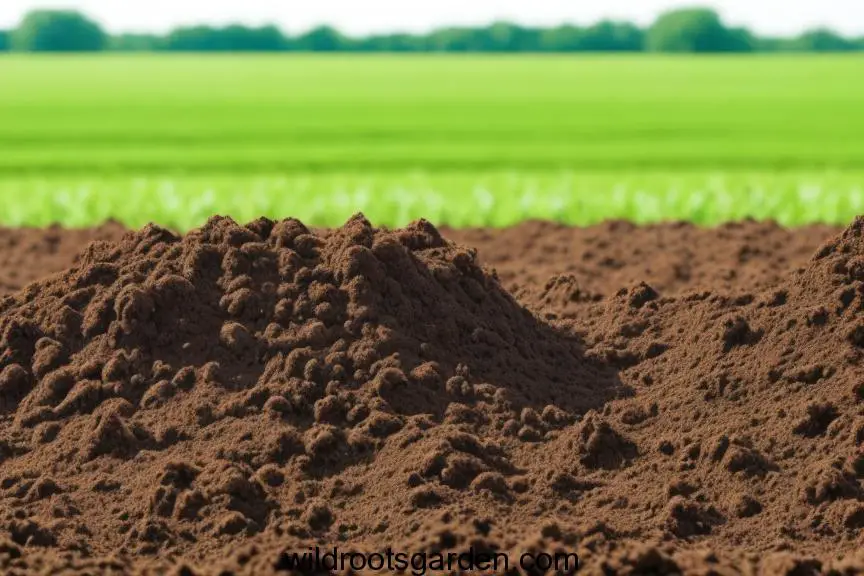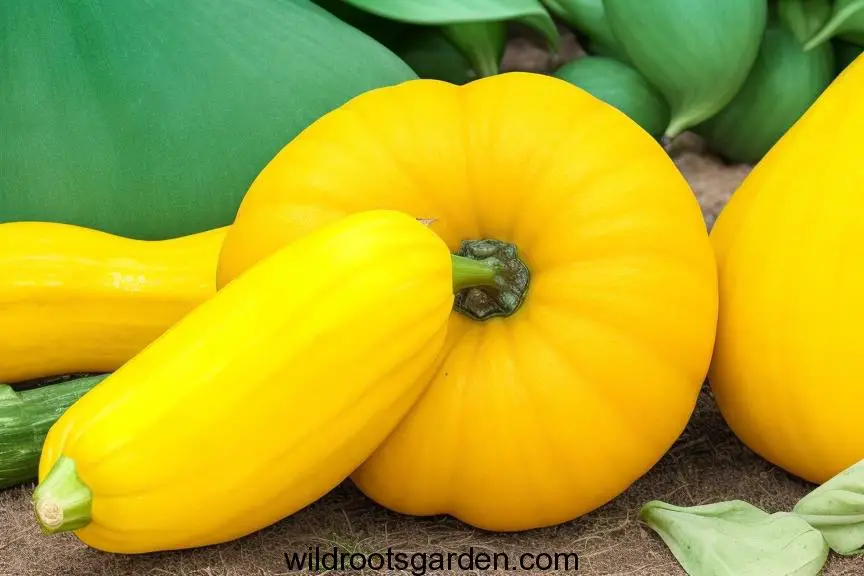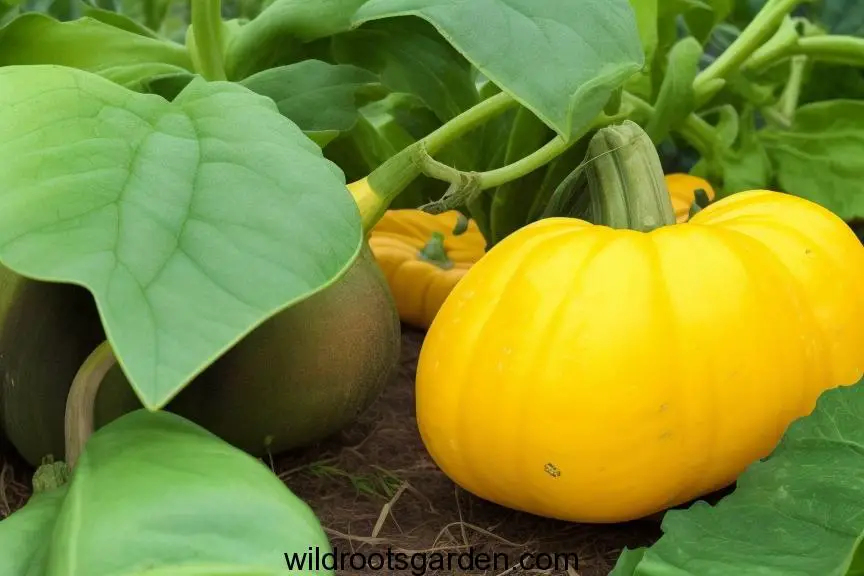Why is My Yellow Squash Turning Orange? A summer squash variety known as yellow squash usually turns yellow when fully ripe. Yet, as they get older, some yellow squash cultivars will turn orange. This is a normal occurrence and doesn’t imply that the squash is of poor quality. Many factors can cause yellow squash to turn orange. Overripeness is one factor. The squash will begin to turn orange if it is left on the vine for too long. The absence of sunlight is another factor. For yellow squash to ripen properly, it needs full sun. If it doesn’t receive enough sunlight, it can turn orange rather than yellow.
Rarely, an illness can cause yellow squash to turn orange. You should seek guidance from your neighborhood nursery or garden center if you are concerned that your yellow squash is turning orange as a result of a disease.
It is better to choose yellow squash when it is still yellow if you intend to eat it. If the squash is orange, it will still be edible, but it might not be as tasty or sweet.
Here are some tips for preventing yellow squash from turning orange:
- Plant your yellow squash in a sunny spot.
- Water your yellow squash regularly.
- Harvest your yellow squash when it is still yellow.
If you follow these tips, you can help prevent your yellow squash from turning orange.
The Natural Color Variation

Understanding the Different Varieties
Yellow squash comes in various shapes and sizes, each with its own distinct characteristics. Some varieties naturally have a deeper shade of yellow, bordering on orange. It’s essential to recognize that these variations exist within the normal range of the vegetable’s appearance.
Influence of Ripeness
The ripeness of a yellow squash can also influence its color. As squash matures and becomes more ripe, it may undergo subtle color changes. This shift is often a sign that the vegetable is reaching its peak flavor and sweetness.
Environmental Factors
Sunlight Exposure
Excessive exposure to direct sunlight can cause yellow squash to develop an orange hue. This phenomenon occurs due to increased levels of carotenoids, pigments responsible for both the yellow and orange colors in fruits and vegetables. While sunlight is essential for growth, providing partial shade during the hottest parts of the day can help maintain the desired yellow color.
Soil Conditions

The soil’s mineral composition and pH level can impact the color of yellow squash. Certain soil conditions can lead to the accumulation of carotenoids, causing the squash to take on an orange tint. Regular soil testing and proper nutrient management can mitigate this issue.
Nutritional Aspects
Carotenoid Content
Carotenoids, which also give other crops like carrots and pumpkins their orange hue, are what give yellow squash its distinctive color. Color alterations may result from variations in the concentration of particular carotenoids. Including more foods high in carotenoids in your diet can benefit your general health.
Cooking Techniques
The alteration of yellow squash’s color during cooking can be accelerated. The caramelization of natural sugars and carotenoids during high-heat cooking techniques like roasting or grilling can give food a more orange look.
Pest and Disease Factors
Bacterial or Fungal Infections
Yellow squash may become discolored due to specific bacterial or fungal diseases. These infections may result in the development of pigments that alter the color of the vegetable. These problems can be avoided by practicing good garden hygiene and taking preventive steps.

Insect Damage
The tissue of the plant can be harmed by insects like squash bugs or aphids, changing the color of the plant. Pest infestations can be treated effectively and quickly to reduce their negative effects on squash color.
The shift of yellow squash from bright yellow to orange hues in the world of gardening and culinary delights can be attributed to a number of things. There are many factors at work, including natural color variance, environmental impacts, and dietary considerations. You can savor dishes made with mouthwatering yellow squash by being aware of these aspects and taking the required safety measures.
FAQs (Frequently Asked Questions)
- Is it safe to eat yellow squash that has turned orange? Yes, the color change is generally harmless and doesn’t affect the squash’s edibility. However, consider investigating the underlying factors causing the color change.
- Can cooking methods affect the color of yellow squash? Yes, cooking techniques that involve high heat can intensify color transformation due to the caramelization of sugars and carotenoids.
- Is orange-yellow squash less nutritious than fully yellow ones? No, the color change doesn’t significantly alter the nutritional value of the squash. It’s still rich in vitamins, minerals, and antioxidants.
- How can I prevent my yellow squash from turning orange? Providing partial shade, maintaining proper soil conditions, and addressing pest and disease issues promptly can help prevent color changes.
- Are there any health benefits to consuming the carotenoids found in yellow squash? Yes, carotenoids are known to have antioxidant properties and may contribute to overall health by reducing the risk of chronic diseases.
Remember, while the color change might raise eyebrows, it’s part of the natural journey of yellow squash as it grows and matures.

